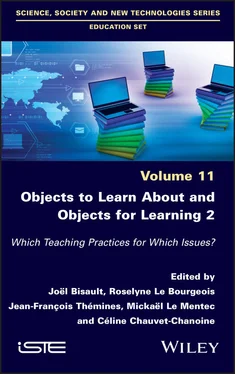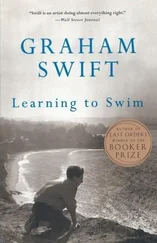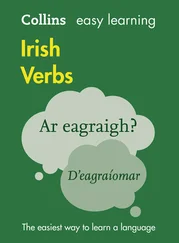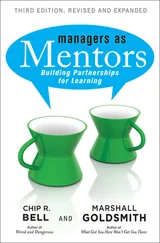Thus, these four contributions analyze the way in which material or symbolic objects enter into a relationship with subjects, their activation and what the subjects take away from them in terms of learning or development from the moment they think about them, handle them or transform them.
Part 3 of Volume 2 – Points of View on Objects and Perspectives
The last part is not, like the previous parts, composed of research texts and professional testimonies concerning a particular object. On the contrary, it brings together contributions addressing the topic of objects in teaching practices in a more global way. Based on his experience as a teacher and researcher, José Luis de los Reyes Leoz ( Chapter 10) presents a resolutely cultural and emotive point of view on objects steeped in history kept in museums. The second point ( Chapter 11) from the conference’s round table presents the points of view of four researchers (Mickaël Le Mentec, Anne-Laure Le Guern, Jean-François Thémines and Abdelkarim Zaid) on the place of objects in their journeys as researchers. In Chapter 12, Alain Panero puts forward a philosophical overview of all the texts in the book by considering the positions, often implicit, of the authors while sketching his own point of view, thus feeling an emotive experience that is a preliminary version of writing.
November 2021
1 Preface written by Joël BISAULT, Roselyne LE BOURGEOIS, Jean-François THÉMINES, Mickaël LE MENTEC and Céline CHAUVET-CHANOINE.
2 1 Twin pan scales, widely used in France until the 1960s/1970s. These types of scales have for a long time been a typical example of school equipment used in every elementary school.
3 2 These batteries were widely used in France (in pocket lamps for example) until the 1960s/1970s and are still used in French elementary school for their practical side (metal plates to facilitate electrical contacts).
4 3 “Repères temporels et spatiaux, découverte du monde”: examples of parts of the French syllabuses for pre-school.
5 4 ZEPs were created in France in 1981 to advance equality of opportunity between pupils, taking into account the social problems of the areas concerned.
6 5 Kergomard, P. (1886). L’éducation maternelle dans l’école, Librairie Hachette et Compagnie, Paris.
We would like to thank all those who contributed to this collective work: the participants in the June 2019 conference who agreed to re-engage with a view to authoring a chapter, the members of the conference’s scientific committee who undertook an expert review of the articles submitted and provided guidelines for editing when necessary and the colleagues or former colleagues who shared with us their expertise on specific topics.
We would particularly like to thank Sophie Pelissier who facilitated the contributions from our Hispanic colleagues, Catherine Rebiffé and Anne Delbrayelle for their invaluable help on French language issues and Karima Olechny for her advice on this English version.
Scientific committee of this publication
Jacques Audran (INSA Strasbourg), Christine Berzin (University of Picardie Jules Verne, CAREF), Joël Bisault (University of Picardie Jules Verne, CAREF), Justine Breton (University of Reims Champagne-Ardenne, CEREP), Céline Chauvet-Chanoine (University of Picardie Jules Verne, CAREF), Cora Cohen-Azria (University of Lille, CIREL), Anne Delbrayelle (University of Picardie Jules Verne, CAREF), Béatrice Finet (University of Picardie Jules Verne, CAREF), Joël Lebeaume (University of Paris, EDA), Roselyne Le Bourgeois (University of Picardie Jules Verne, CAREF), Anne-Laure Le Guern (University of Caen Normandy, CIRNEF), Mickaël Le Mentec (University of Picardie Jules Verne, CAREF), Corinne Marlot (Haute Ecole Pédagogique du canton de Vaud), Sophie Pelissier (University of Picardie Jules Verne, CAREF), Valérie Tartas (University of Toulouse-Jean Jaurès, CLLE) and Jean-François Thémines (University of Caen Normandy, ESO).
PART 1 Objects and Representations of Space and Time
1
The Map and the Game: Objects for Learning Geographical Points of Reference in Elementary School
1.1. Introduction
While learning geographical points of reference has always been and remains a component of training in the discipline, the time reserved for learning these locations as well as the procedures for their discovery should be interrogated in the context of a revitalized geography in which nomenclature is no longer the main subject of discussion.
My comments showcase my experience as a practitioner–researcher, as which I designed and produced a game to facilitate the acquisition of a number of spatial points of reference to be placed on wall maps based on features and locations. Just like other classroom posters (like timelines), this system of small cards to be stuck onto larger wall maps (France, Europe, the world) seeks to respond to the infrequent or even complete lack of use of the maps hanging on the wall, sometimes for a long time, which are already filled in and which provide no means for practical work.
This approach provides the opportunity to learn many things about pupils’ academic and personal knowledge, which can be used as points of reference for the game, about the way they categorize and define these points of reference, and about the possibility of connecting them to themes in the lesson plan so that these points of reference are not learned for their own sake or without putting them to use in a real analysis of how spaces are organized.
Does this process of focusing on an object that was designed, produced and appropriated make it possible to effectively acquire knowledge of these points of reference and to make the connection with the potential of a revitalized school geography that is now structured around reasoning, problem solving, dialog with other disciplines and the consideration of representations?
The temporal context of which this work is a part is important because, since 2015, elementary schools in France have benefited from lesson plans in geography that have contributed a strong, paradigm-shifting change (“living”) that remains very open, particularly with regard to points of reference, for which no specific list is provided. However, this does not help schoolteachers, who are rarely trained geographers and who remain, nevertheless, responsible for this learning of points of reference, hence the recourse to the experiment presented here.
After initially framing spatial points of reference in geography as it is taught and, more specifically, in the lesson plans for upper elementary school grades, I then present the protocol for creating the game and for interacting with it throughout the year, before concluding with results and analysis.
1.2. Points of reference: A special place in geography as it is taught
In France, school geography curricula are intended to reserve a specific place for the question of spatial points of reference. Learning about them is a non-negligible part of the process, generally under the label of “geographical points of reference.” What can we read behind this phrase, which seems all-encompassing?
The term “point of reference” is encountered in geographical dictionaries, where it signifies “a mark or a signal indicating a location or a place” (Brunet et al . 2005). The authors specify that this has three uses: the point of reference serves “to (1) situate or locate oneself in space, (2) as a basis for evaluating distance and (3) to indicate a risk or a danger” (Brunet et al . 2005). Other geographers have discussed the topic, adding that “the point of reference” can be understood vaguely as “using the identifiable elements of the landscape” or more precisely as “using a system of reference coordinates (orthonormal reference axes)” (Bavoux and Chapelon 2014). What lies behind this entry is one of the discipline’s biggest problems: that localization is determined both as “a position in space [and as] a point of reference for that position (and a process for moving to a particular location)” (Bavoux and Chapelon 2014).
Читать дальше












